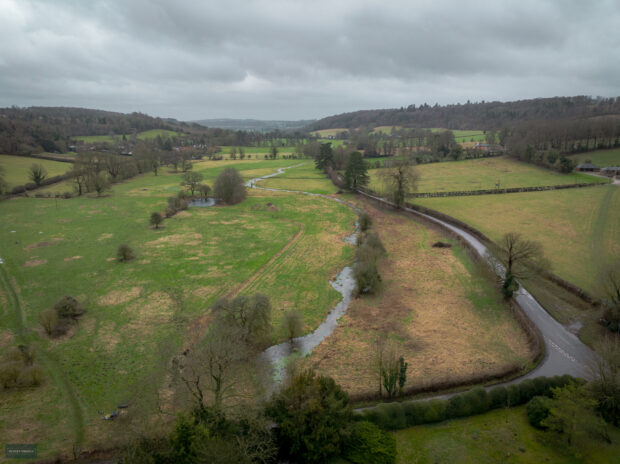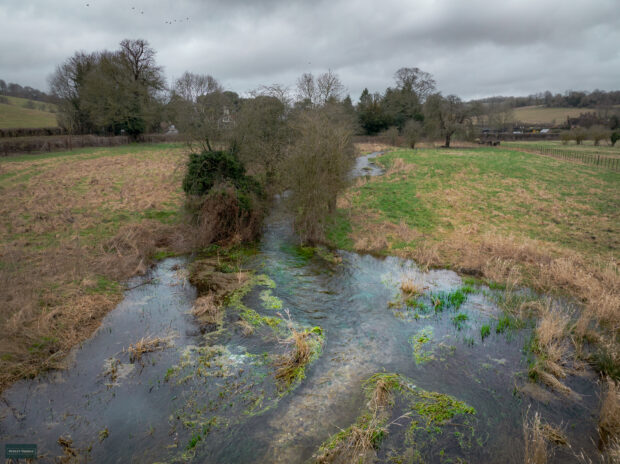New life has been breathed into Buckinghamshire’s Hamble Brook by a substantial wetland site spanning 2,500 square metres. This work, led by the Chilterns Chalk Streams Project, further extends the largest scheme of its kind involving the Environment Agency, and aims to restore the chalk stream to its natural state. The Hamble Brook is a rare winterbourne (meaning it only flows periodically) that joins the Thames at Hambleden Lock. Its natural function and ecology have been compromised over the years due to agricultural cultivation and ornamental landscaping, but this project seeks to restore a range of habitats and ecosystems not seen in over 140 years.
This latest stage of the project added a new wildlife habitat. Working with the natural contours of the landscape, the partnership created lowered areas that will get wet sooner and stay wetter for longer. During high-water periods, this is valuable habitat for birds, insects, amphibians and small mammals, but will also provide refuges when the channel enters its next drying phase.
Chalk streams are globally scarce and unique ecosystems. In the Chilterns, there are 9 major chalk streams, each of which has played an important role in shaping our cultural heritage. They are all under threat and require a combination of education and direct intervention to ensure their long-term survival.

Transforming the landscape
The Chilterns Chalk Streams Project has re-naturalised over 1100 metres of the bourne and another 200 metres of connecting channels. Woody material and gravel has been used to restore variety into the channel, backwaters have been created, two groundwater-fed ponds enhanced, and native saplings planted to create shade and wildlife corridors.
These efforts have enhanced the stream’s natural character and better connected it to its landscape. The project’s success has sparked interest from several more landowners which could extend the restoration by an additional 2kilometres.

A collaborative effort
The restoration was made possible with the support of three landowners, the National Trust and funding from the Green Recovery Challenge fund administered by the Environment Agency, as well as the Chilterns National Landscape. Pippa Tucker, Catchment Coordinator at the Environment Agency, recently toured the site with Dr Elaine King, CEO of the Chilterns National Landscape, and Adrian Porter, the organisation’s Rivers Officer.
According to Pippa, “The wetland areas provide refuges during the main channel’s temporary dry phases in the summer months, while in wetter times, they also help absorb floodwater.”
Elaine emphasises the significance of chalk streams, saying, “Chalk streams are globally rare and fragile habitats that require sensitive management. We were delighted to be able to carry out the work and it’s fantastic to see the site already showing significant promise.
“It’s a great example of what can be achieved through a successful partnership, and we hope this will pave the way for similar restoration projects along the brook and throughout the wider Chilterns landscape.”
The range of threats facing chalk streams is complicated, but schemes like this show that problems can be overcome through collaboration and investment. By working with the Chilterns Chalk Streams Project and its partners, the Environment Agency has helped secure a brighter future for the Hamble Brook and its important and biodiverse habitat.
Check out this video produced by partner organisation the Chilterns Chalkstream Project:

Leave a comment